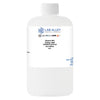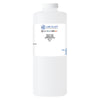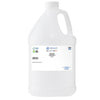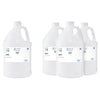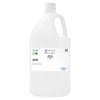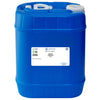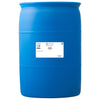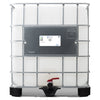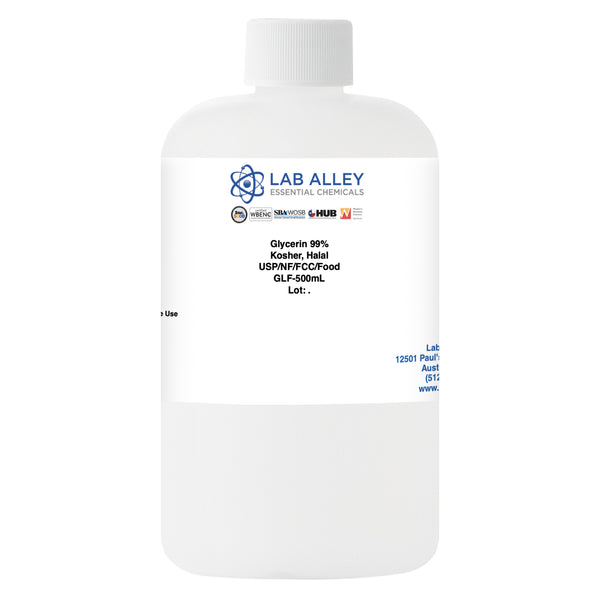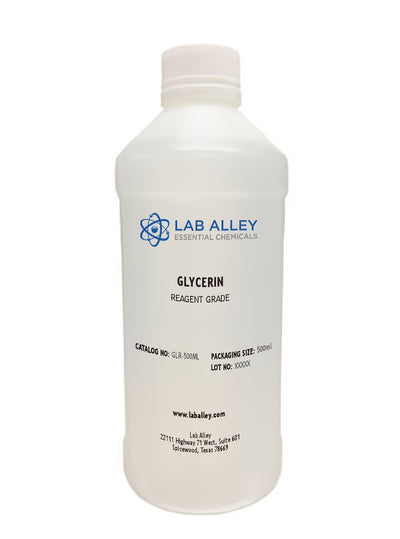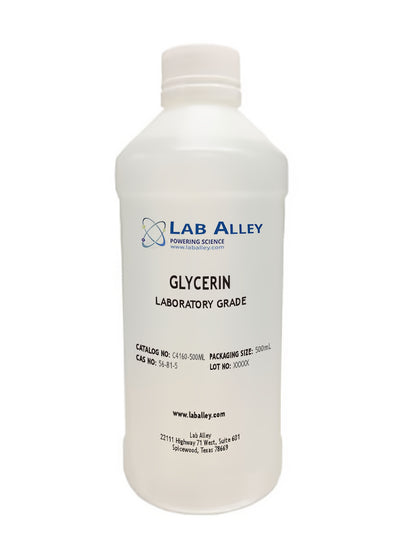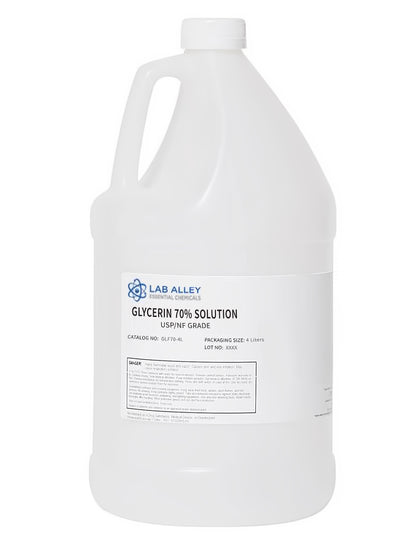Glycerin 99% USP/NF/FCC/Food Grade, Kosher, Halal


100% Vegetable Based, Suitable For Food, Drug, And Medical Purposes
Business Support
Description
About Glycerin 99% USP/NF/FCC/Food Grade, Kosher, Halal
Glycerin 99% USP/NF/FCC/Food Grade, Kosher from Lab Alley is a compound that meets all the requirements of the United States Pharmacopeia (USP), in addition to the National Formulary (NF) and the Food Chemicals Codex (FCC). This product is also regulated by the Food and Drug Administration and is internationally recognized for its identity, purity, and quality as a food product. Thanks to its high level of purity, 99%, it can be used for food, drug, and medical purposes, and also for most laboratory purposes.
Our Glycerin is 100% vegetable based, with Kosher certification, meaning that it is made from kosher vegetable oil or petroleum and processed on kosher equipment. It has a clear appearance, and it is a heavy and viscous emollient that can be commonly used in anything from edibles, vape liquids, tinctures, chocolates, lotions, body scrubs, and face care products.
This chemical compound, made of palm oil and other vegetable oils, is available for the use of all kosher products and also It is used in the cosmetic and body care industry to assist in retaining moisture and pulling oxygen into the skin.
COMMON USES AND APPLICATIONS
- Substitute for Liquid Sugar or Sugar Alcohol
- Ingredient in Chewing Gum
- Solvent
- Cake Icing and Sweetener
- Food Coloring
- Toothpaste
- Shaving Cream
- Soap and Shampoo
- Softener and Moisturizer
- Cough Syrup, Elixirs, and Expectorants
- Tablet-holding agent
PRODUCT VIDEOS
WHY BUY FROM LAB ALLEY
- Competitive pricing and well-stocked US-based inventory.
- Fast 1-2 business days shipping, including hazmat transport.
- Exceptional customer service and chemical technical support.
- Delivery on budget, on time, every time.
PRODUCT INFORMATION
Customer Reviews and Q&A
Safety and Shipping
GRAS Reference Citation 21 FR 182.1320.
Please contact us to request a Safety Data Sheet (SDS) and Certificate of Analysis (COA) for Glycerin, USP/NF/FCC.
Business Support
Built for Business.
At Lab Alley, we simplify procurement with custom quotes, credit applications, tax exemptions, and fulfillment support, ensuring on-budget, on-time delivery - your success is our priority.
Apply for Credit
A Lab Alley credit account streamlines purchasing for your business. Our Customer Success Team is available to help you through every step of the process.
Request a Custom Quote
Get a fast, customized quote tailored to your specific needs. Our team ensures accurate pricing and availability to help streamline your purchasing process.

Additional Business Resources
Lab Alley provides access to essential certifications, documents, and other resources to support your business.
Product Manuals
Certificates of Analysis

Create a Lab Alley Account

RECEIVE exclusive offers, promotions, and discounts on chemicals.

Always have the product you need, when you need it with our AUTOSHIP program.

